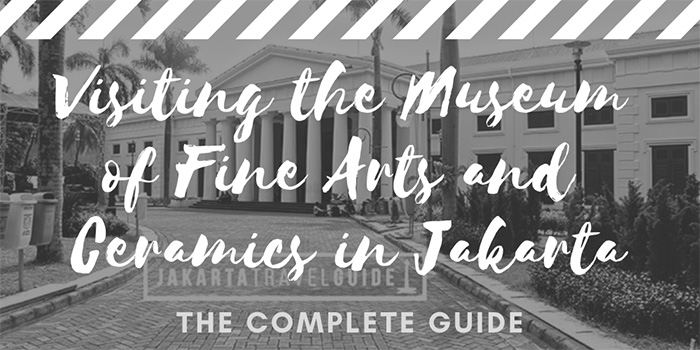
Everything you need to know about the Museum of Fine Arts and Ceramics in Kota Tua
Museum of Fine Arts and Ceramics: Overview
The Jakarta Museum of Fine Arts and Ceramics, known locally as ‘Museum Seni Rupa dan Keramik’ is one of the most ideally situated museums in all of the city.
It is located in a beautiful colonial building and it occupies the eastern side of Fatahillah Square, right in the heart of Kota Tua, Jakarta. This is one of the most popular areas for sightseeing in all of Jakarta.
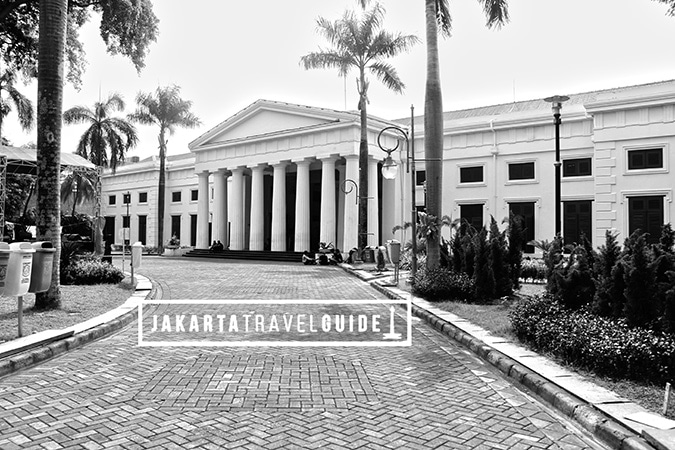
Directly across from the Museum you will find a few other museums that are popular with visitors to the city.
The Wayang (Puppet) Museum and Jakarta History Museum are the two closest museums, to the Museum of Fine Arts and Ceramics.
The Museum of Fine Arts and Ceramics is immediately adjacent to Jakarta’s History Museum whereas the puppet museum is located directly across Fatahillah Square.
Although the building itself has been used for everything from being a Court of Justice to a military dormitory over the years, the Museum was officially inaugurated in 1976.
As its name suggests, the Museum has a wide selection of pieces of art and ceramics, with a slightly greater emphasis on aged ceramics from different regions of Indonesia.
This is by no means the most modern museum in Jakarta. Many visitors suggest that it needs a facelift, and rightfully so. You could argue that the colonial building is equally as interesting as the exhibits due to the poor upkeep.
If you enjoy looking at pieces of art or ceramics this is an affordable and interesting place to visit, however.
Most of the art on display in the museum is in the form of paintings. The paintings are organized according to time period. A summary is provided below:
- Raden Saleh Era Room (1880–1890)
- Hindia Jelita Room (1920’s)
- Persagi Room (1930’s)
- Japanese Occupation Period Room (1942–1945)
- Pendirian Sanggar (“Founding of Art Studio”) Room (1945–1950)
- Birth of Realism Room (1950’s)
- Contemporary Art Room (1960’s-present)
Fortunately, the museum also has an extensive display of ceramic works from Indonesia and abroad.
Some of the international collects are from countries such as Japan, Vietnam, Thailand, China, and other European destinations. You can check out some collections from the Ming and Ching Dynasties from the 14th century.
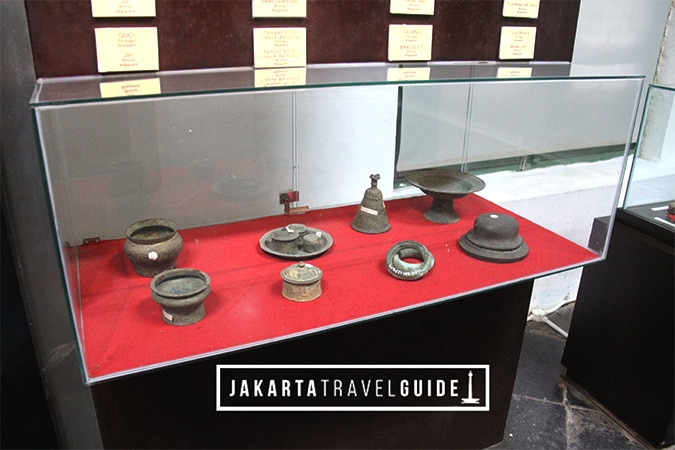
The Indonesian ceramics that are in the Museum of Fine Arts and Ceramics are from locations such as Bandung, Lombok, Medan, Aceh, Palembang, Lampung and other cities across the country.
In other words, if you are interested in ceramics, there is enough here to keep you occupied for a while!
A few other interesting features of the Museum of Fine Arts and Ceramics in Jakarta is the library area and the studio.
If you visit the library, you can become more educated about the works displayed throughout the museum. Basic ceramic classes are offered to student groups and third party guests.
You can inquire about the ceramic-making lessons and workshops when you visit the museum.
Jakarta Travel Guide Insider Tip: Courtyards in Kota Tua
The Jakarta Museum of Fine Arts and Ceramics is located in Kota Tua.
This tends to be a very hot, unshaded area of the city, especially during the afternoon hours. There are two hidden, Dutch-made courtyards that provide the perfect setting to grab a drink and a snack to refresh and rehydrate while you are sightseeing around Fatahillah Square.
The first of which is located inside the Jakarta History Museum which occupies the southernmost portion of Fatahillah Square. The second courtyard is located to the east, inside the Jakarta Museum of Fine Arts and Ceramics.
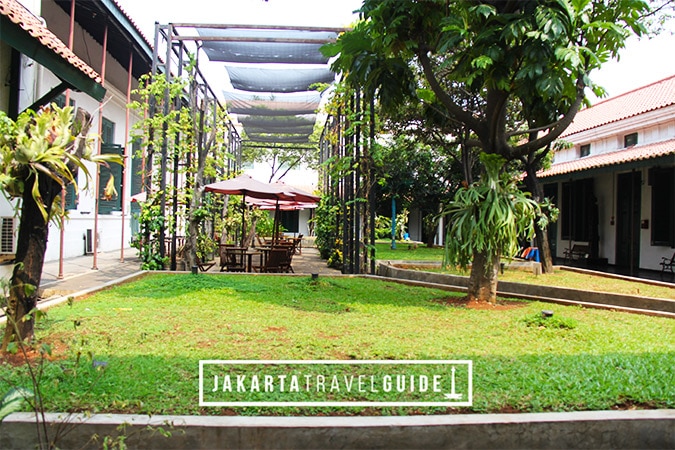
Both courtyards are pleasant. However, usually, the Jakarta Museum of Fine Arts and Ceramics receives fewer visitors because it isn’t quite as accessible off of the Square.
So if you are seeking some refuge from the thick crowds throughout Fatahillah Square, this is the perfect place. The Museum security are quite laid back, therefore don’t feel obligated to buy something within the Museum itself.
If you have already purchased something outside of the Museum they won’t have a problem with you bringing it in.
Museum of Fine Arts and Ceramics: Essential Visitor Information
Opening Times for the Museum of Fine Arts and Ceramics
- Monday: Closed
- Tuesday: 8 am – 5 pm
- Wednesday: 8 am – 5 pm
- Thursday: 8 am – 5 pm
- Friday: 8 am to 11:30 am and 1 pm to 3 pm (adjusted for Friday prayer)
- Saturday: 8 am – 5 pm
- Sunday: 8 am – 5 pm
***Closed on public holidays.
Entrance Price for Museum of Fine Arts and Ceramics
Adults: 5,000 IDR
Museum Address
Jl. Pos Kota, RT.9/RW.7, Pinangsia, Tamansari, Kota Jakarta Barat, Daerah Khusus Ibukota Jakarta 11110
What is located around the Museum of Fine Arts and Ceramics in Jakarta?
Other Attractions in Kota Tua
The Museum of Fine Arts and Ceramics is in one of the best areas for sightseeing in Jakarta – Kota Tua.
The central heart of the colonial district of Jakarta is Fatahillah Square (locally called Taman Fatahillah in Bahasa Indonesian). Most of the museums in Kota Tua are very densely concentrated within a few hundred meters of this square, including the Museum of Fine Arts and Ceramics.
You could call this area one of the ‘museum’ districts of Jakarta. There are two other museums that directly surround this square:
- Jakarta History Museum (Museum Sejarah Jakarta)
- Wayang (Puppet) Museum
It is common to see both local and international tourists walking across Fatahillah Square to access these different museums. You can literally walk between them in under two minutes.
Cafe Batavia is another place you may want to check out while you are in Kota Tua.
This is an elegantly designed colonial cafe that offers great views of Fatahillah Square from the top floor. It is very popular with local and foreign tourists due to their food and drink choices. But let’s face it, the ambiance and elegant interior make Cafe Batavia a very popular choice. It is very photogenic.
Museums
There are two other museums near the Museum of Fine Arts and Ceramics in Kota Tua:
These are both located to the southeast of the museum. You can walk to both of these in about 5 minutes.
Visiting Kota Tua is a good idea while you are in Jakarta. It is one of the most interesting areas in the city to walk around. Aside from these museums, there are streetside markets, hipster cafes and a growing number of budget accommodation options available.
Best Accommodation Options
A strategic area to stay that is between the Monas and Kota Tua is just south of Glodok in Gajah Mada. Yello Hotel Harmoni and HARRIS Vertu Hotel Harmoni two modern, and affordable properties that receive positive reviews from guests.

You can walk to these hotels from the Museum of Fine Arts and Ceramics in about 30 minutes, or drive in about 10 minutes. Of course, traffic conditions in Jakarta can vary during peak times.
The Pro’s and Con’s of Visiting Museum of Fine Arts and Ceramics
Why you should visit the Museum of Fine Arts and Ceramics in Jakarta?
The Jakarta Museum of Fine Arts and Ceramics, like many of the other museums within the city, is extremely affordable based on international standards.
This makes it ideal for groups and families to check out the painting and ceramic exhibits throughout the Museum without spending a fortune.
Similar to the History Museum of Jakarta, it also has a pleasant courtyard for visitors to enjoy.
Since the walls in the building are quite high, and the courtyard is narrow, a nice shaded area is created during the afternoon hours. Therefore, you can purchase a coffee or a snack and relax before exploring your next site in Kota Tua.
As mentioned before, the Jakarta Museum of Fine Arts and Ceramics is in one of the best locations in Jakarta. Consequently, if you plan to visit Kota Tua then you won’t have to arrange another drive to see it because it directly faces Fatahillah Square.
Why you might not want to visit the Museum of Fine Arts and Ceramics in Jakarta?
The Jakarta Museum of Fine Arts and Ceramics does have a decent selection of local paintings, wood carvings, and ceramics on display. The building, however, is quite aged and could use a facelift.
The exterior of this colonial building appears to be much better maintained in comparison to the interior. The ventilation within the building could also be improved especially on the second floor. Expect it to be stuffy as you walk through the different exhibits.
Over time it would also be nice to see a greater emphasis on using technology throughout the Museum, opposed to printed descriptions of the artifacts on display.
Some of the descriptions aren’t the clearest and they are mainly in Bahasa Indonesian. More could be translated to English for international visitors.
JTG Insider Tip: Itinerary Suggestions for Kota Tua
Since the Jakarta Museum of Fine Arts and Ceramics is located right in the heart of Fatahillah Square, alternatively known as the center Jakarta Old Town (Kota Tua), it won’t take you much time to fit it into your trip itinerary.
There are various attractions that are within walking distance of the Museum. Therefore, try to visit all of the attractions in this area as opposed to traveling on multiple occasions to Kota Tua through Jakarta’s traffic-clogged streets.
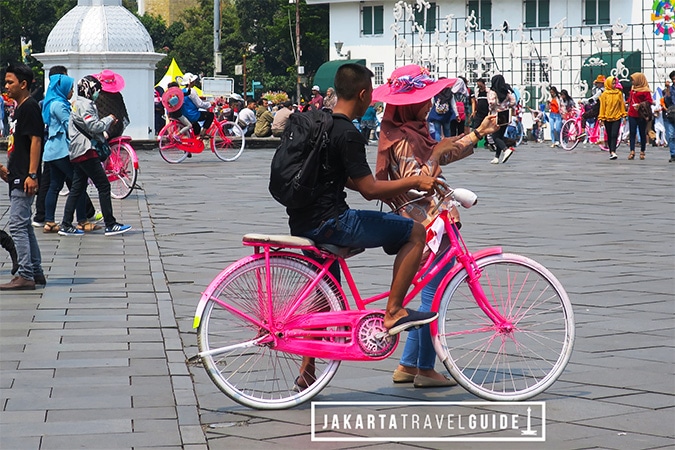
Due to the number of museums in Kota Tua, it’s definitely possible to get tired of seeing them all. Instead, research the following sights and try to prioritize which ones interest you the most: Fatahillah Square, Wayang (Puppet) Museum, Bank of Indonesia Museum, Mandiri Bank Museum, Café Batavia and the Kota Tua Street Market.
***Read more about Jakarta itineraries with this comprehensive itinerary guide.
10 Closest Hotels to Museum of Fine Arts and Ceramic in Jakarta
***Organized according to Star Rating
| Name of Property | Star Rating/Distance/Travel Time to Station | Average Guest Review Score |
|---|---|---|
| Le Grandeur Mangga Dua Hotel | 5-Star (2.6 km/ 15-minute drive) | 7.81/0 4980+ reviews |
| Mercure Jakarta Kota Hotel | 4-Star (2.9 km/ 11-minute drive) | 7.6/10 1373+ reviews |
| Novotel Jakarta Gajah Mada Hotel | 4-Star (2.1 km/ 6-minute drive) | 8.0/10 1686+ reviews |
| Horison Arcadia Mangga Dua | 4-Star (2.3 km/ 15-minute drive) | 7.7/10 85+ reviews |
| Mahkota | 3-Star (1.3 km/ 5-minute drive) (1.1 km/ 14-minute walk) | No ratings and reviews yet |
| MaxOneHotels at Glodok | 3-Star (1.8 km/ 7-minute drive) | 7.9/10 416+ reviews |
| Favehotel LTC Glodok | 3-Star (2.9 km/ 10-minute drive) | 7.5/10 1073+ reviews |
| Front One Cabin Gajahmada Jakarta | 2-Star (2.7 km/ 10-minute drive) | 6.7/10 21+ reviews |
| Everyday Smart Hotel Mangga Besar | 2-Star (2.8 km/ 10-minute drive) | 7.0/10 456+ reviews |
| Amaris Hotel Mangga Besar | 2-Star (2.9 km/ 7-minute drive) | 7.0/10 642+ reviews |
Final Thoughts about Visiting the Museum of Fine Arts and Ceramics in Jakarta
The Jakarta Museum of Fine Arts and Ceramics is an extremely affordable and convenient museum to visit while visiting Kota Tua in Jakarta.
Although some of the exhibits on display are really interesting, especially the ceramic works, the Museum is quite dated. Therefore, if you visit the Museum with the expectation that it will be on par with North American and European museums, you will be quickly disappointed.
Again, it’s all about your expectations.
If you want to check out some unique Indonesian ceramics, then visit. You might even consider the cheap entrance fee well worth the access to the interior courtyard for some rest and refuge from the crowds and Jakarta’s sweltering afternoon rays.
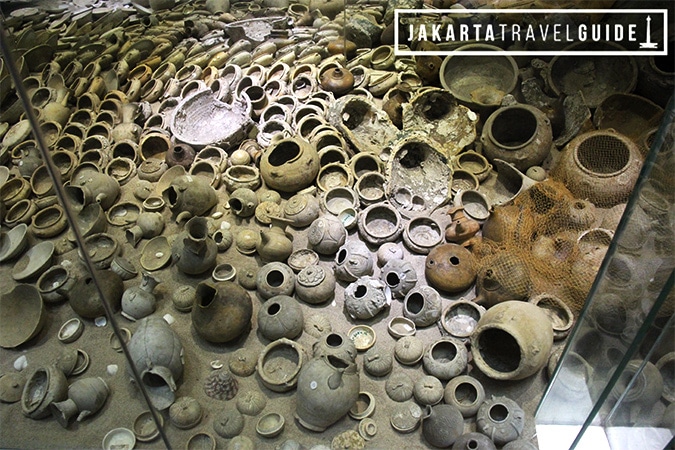
Sometimes on weekends vendors set up in front of the Museum, which can partially occlude the view to see whether it is open or closed. In that case, just walk up to the gate and ask the security guards if it’s open.
